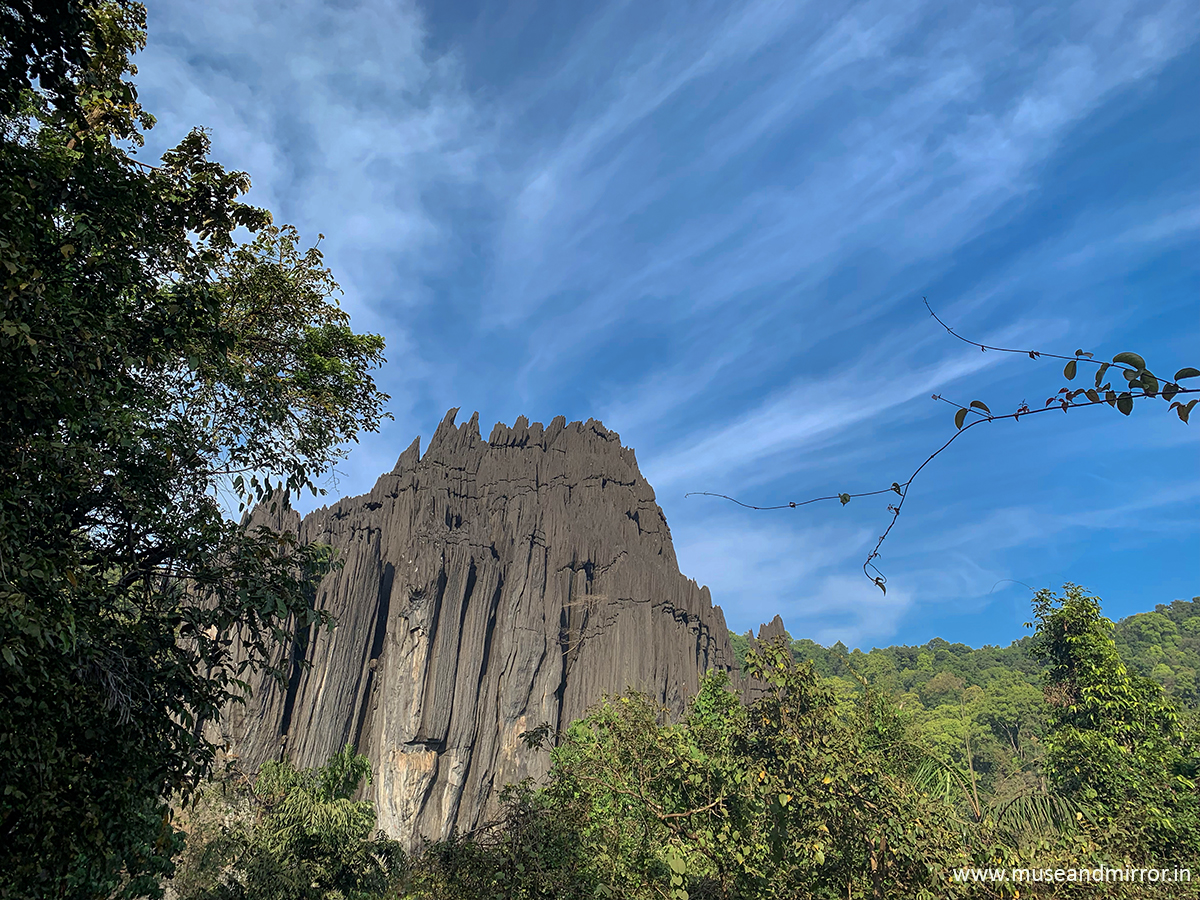



Nearly every highland village talks of certain routes that earlier generations traversed, but have since been abandoned owing to the changing socio-economic and environmental conditions leading to the gradual dissipation of local knowledge, history and belief systems. Narratives about societies and linkages can be considered intangible aspects of ruins. With every passing generation certain details of the legend get lost, while some tales about a place and the people who lived there survive despite the trail being abandoned long ago.

With the passage of time many trails, rituals, stories of linkages and flow become few. These oral histories often stitch together trails, rituals, lifestyle and space-relations of societies, which underwent cartographic readjustments. Ruins are not mere residuals of man-made structures they also include narratives and histories, which continue to exist as legends and folktales in an area. Across this journey of time and space, people preserved and remembered these changes through rituals and legends associated with certain areas and places while at many other such sites, signs of human inhabitation simply got lost in the passage of time. When people moved they transmitted ideas, imaginations, technologies, rituals and habits from one place to another. As people responded to the rhythms of the climatic events, newer villages were created, and older ones were abandoned. Thus, the climatic fluctuations in the area’s geological history shepherded human migration across different passes and valleys, from higher to relatively lower altitudes. Warming led to the retreat of Himalayan glaciers, which exposed newer and higher areas suitable for human activities, while cooling led to glaciers advancing down to lower levels impacting the growing seasons and rendering higher human settlements largely untenable. Throughout history, since its creation 50 million years ago, this mountain system has undergone periods of cooling and warming. The impact of climate change is magnified manifold in the fragile Himalayan highlands. Temperature and precipitation patterns have undergone considerable changes in the last few hundred years, and have directly influenced the growing season, thereby limiting the carrying capacity of the area. As people move away from the area, due to either social, political or environmental factors, or even a combination of all of these, such physical structures are destroyed by environmental events like avalanches, flash-floods, landslides, and incrementally by seasonal and diurnal freeze and thaw, which acts upon these structures with variable degrees depending upon the location. The harsh environmental conditions of the Himalayas have resulted in a fragile ecology in which seasonal upkeep of man-made structures, such as houses, animal sheds, temples, monasteries, agricultural fields, and so forth, is required on a regular basis. Naturally one would wonder why there are so many deaths at one place and what happened to the stone houses and agricultural terraces present there? Is it some kind of peculiar site or is it just what ruins look like? A closer look suggests that the carcasses are mostly of younger animals. What is even more astonishing is the addition of newer skeletal remains of domestic animals every year. As one moves along Runang-Kanda, a high-altitude pasture above the tree-line in Kinnaur district of Indian Western Himalaya, one is almost certain to be startled by the sheer scale of the remains of cattle carcasses strewn amid abandoned and dilapidated stone houses in this area.


 0 kommentar(er)
0 kommentar(er)
